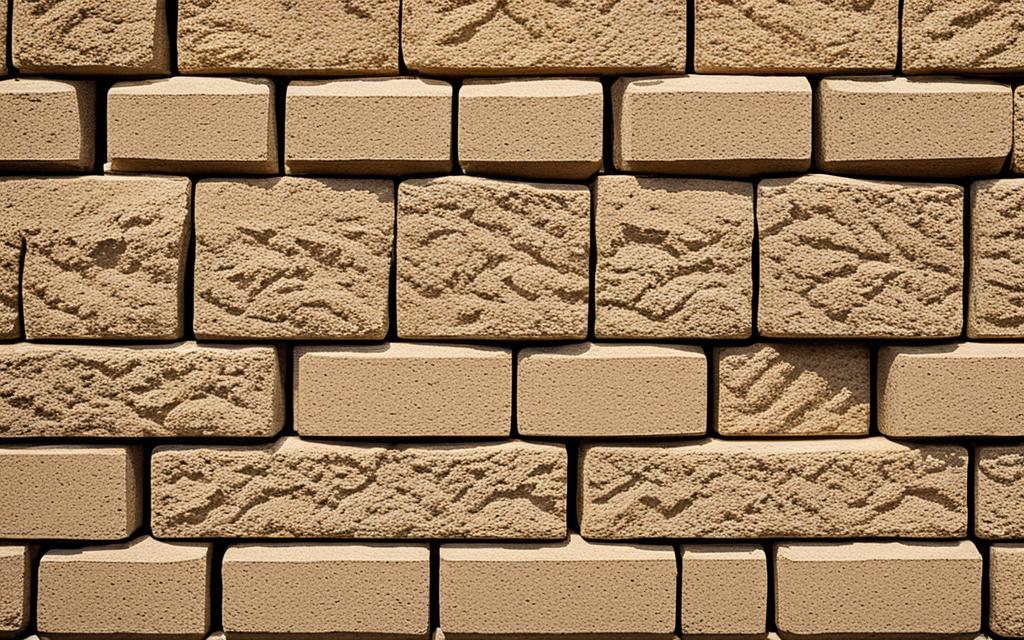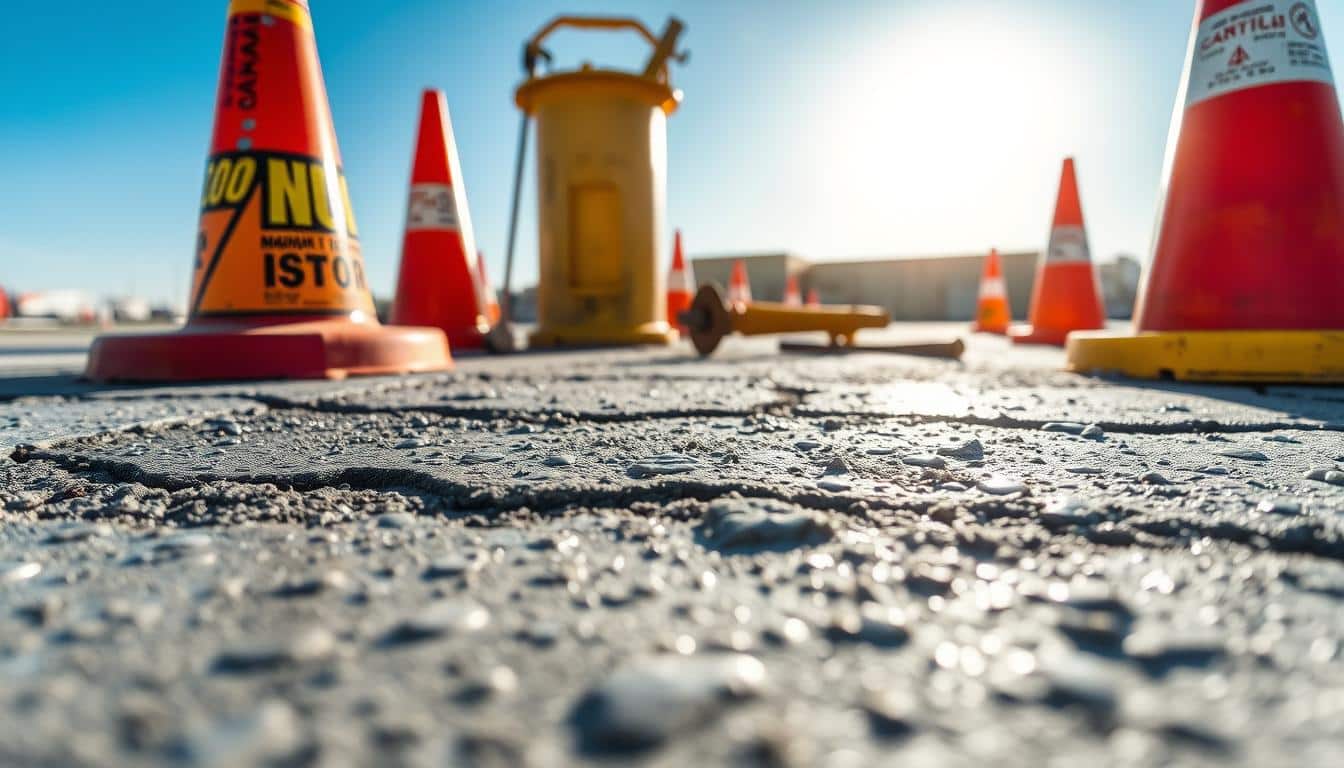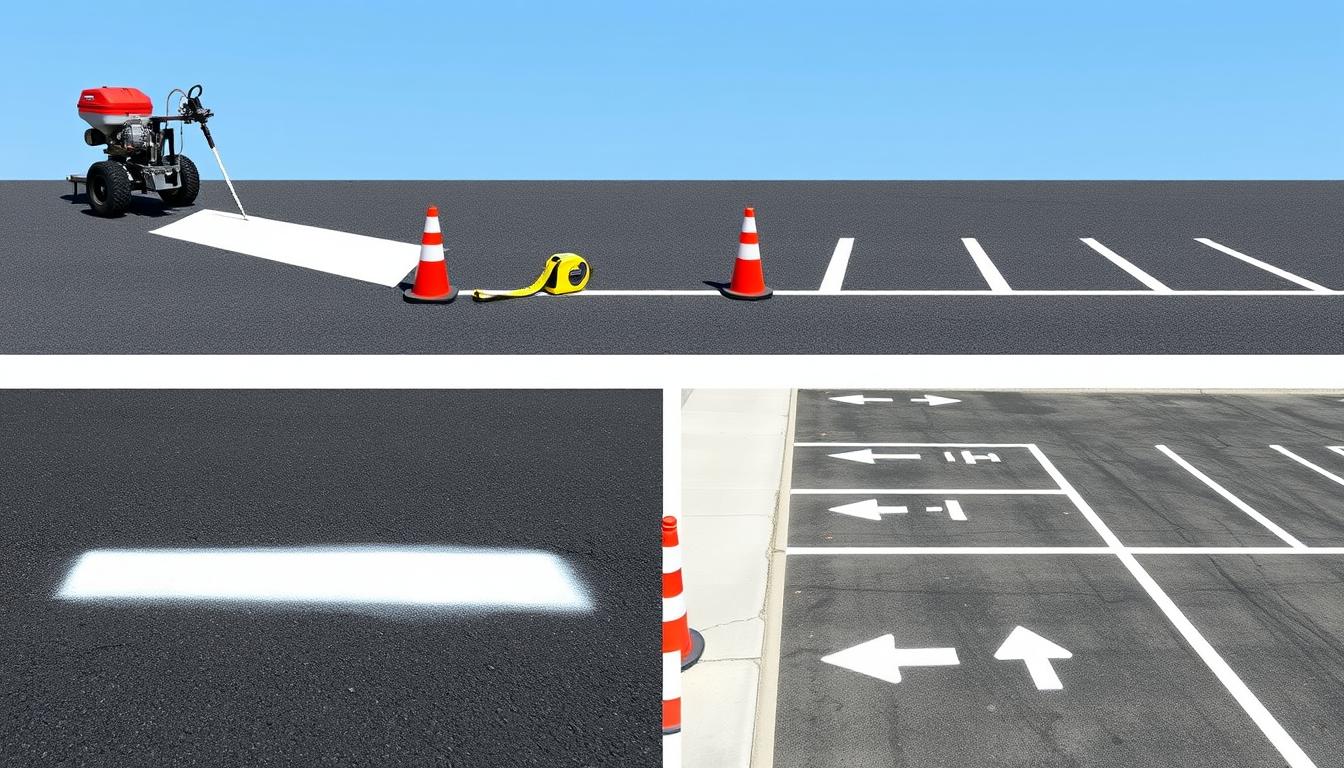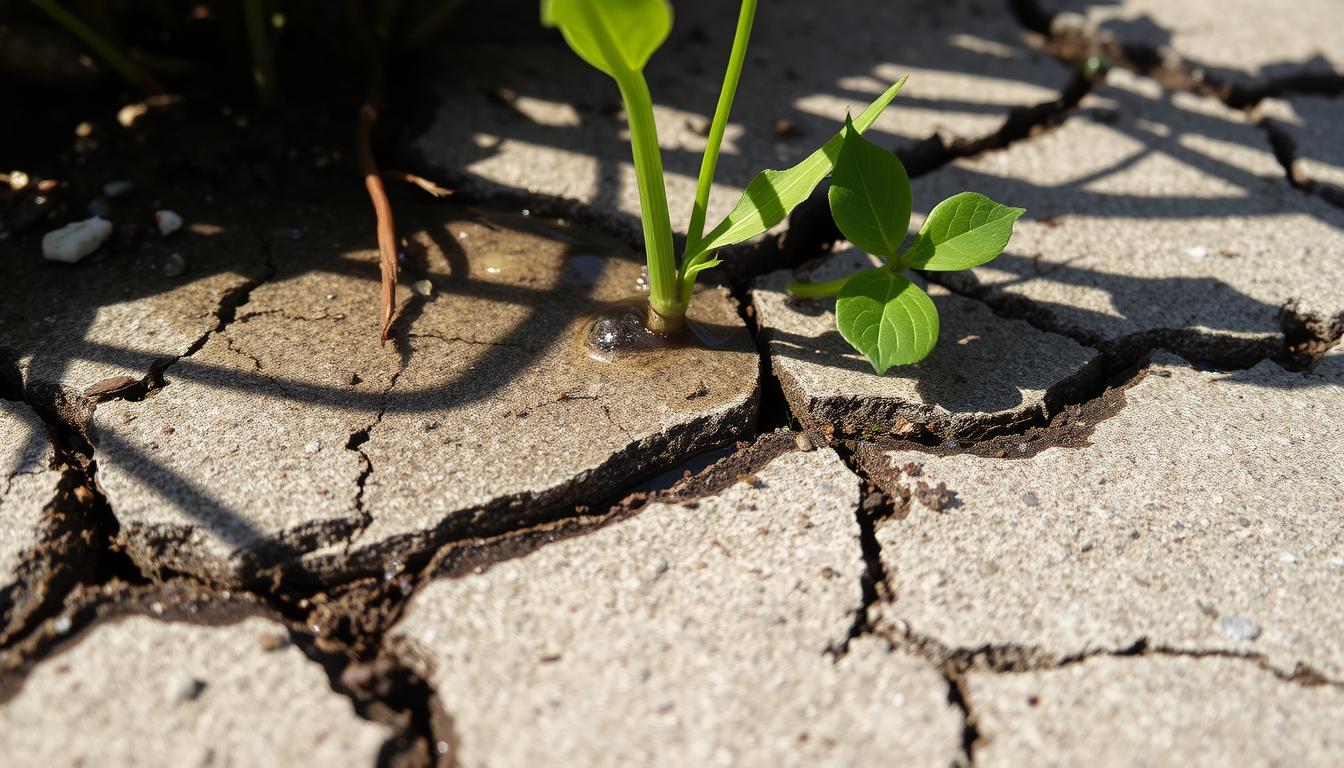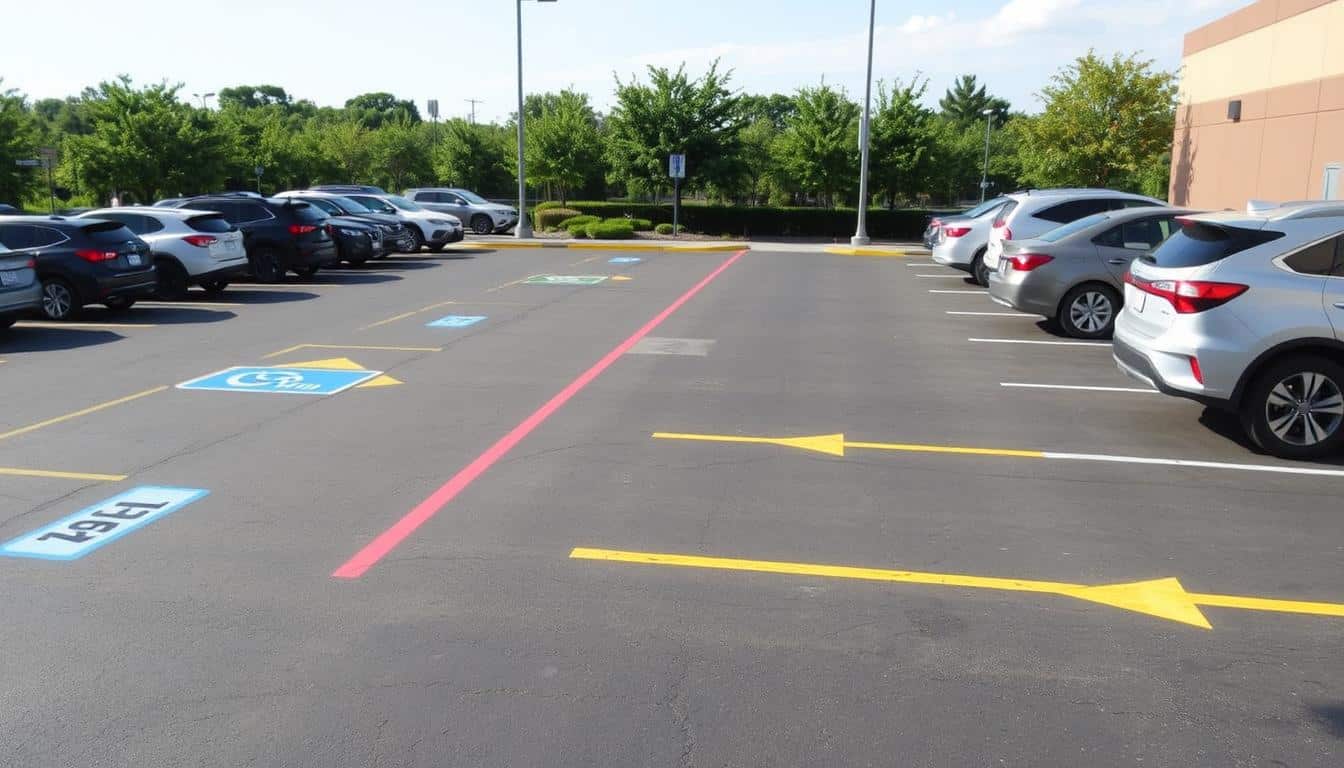Ever wondered how beautiful terraces and outdoor spaces are created? It often begins with a simple item: a retaining wall block. These blocks help keep soil in place to prevent landslides and maintain the garden’s neatness. But what exactly are they?
Retaining wall blocks come in various forms, such as concrete, wood, or stone. They’re built to withstand the pressure of the earth behind them. This prevents soil from sliding and allows for the creation of spaces like gardens or patios. Each block can differ in size, color, and design, making it easy to make a space unique.
What’s unique about these blocks is how they interact with the earth. They fall into two categories: gravity walls and reinforced walls. Gravity walls use their weight to counteract soil pressure. They’re ideal for shorter walls. Reinforced walls, on the other hand, are for taller structures. They use materials like geogrid to increase their strength.
Key Takeaways:
- A retaining wall block is a structure that holds back soil and prevents erosion.
- They are made from various materials and come in different sizes, shapes, colors, and textures.
- Retaining walls can be gravity walls or reinforced walls, depending on their construction and purpose.
- Gravity walls rely on their weight, while reinforced walls use reinforcement materials to enhance soil retention.
- Retaining wall blocks offer endless design possibilities and customization for landscape projects.
- Call HT Paving for all of your retaining wall needs in San Mateo, CA, and surrounding areas.
Benefits of Retaining Wall Blocks
Retaining wall blocks are perfect for landscaping. They are versatile and fit well in both homes and businesses. Their ability to function is a big reason for their popularity.
They prevent soil from washing away. They act as a barrier against wind and rain. This is very useful on steep ground.
These blocks can also create terraced gardens. You can build up your garden with them. This makes your garden look interesting and beautiful.
They also help mark different areas in a yard. You can use them to separate flower beds, walkways, or sitting spots. This gives each area its own space and makes the yard more organized.
Plus, they make your yard look good. You can choose from many sizes, shapes, and colors. No matter your style, you’ll find the right block for you.
The process of putting them up is not hard. You just stack them right. This means you can do it yourself even if you’re not a pro.
There are many places where you can buy these blocks. They offer lots of choices in materials, colors, and styles. This lets you make your wall just how you want it.
Another big plus is their strength. They are made to last and hold up well under pressure. Your wall will stand for a long time.
Imagine a garden with flowers on different levels, clear paths, and a nice place to sit. Adding retaining wall blocks improves how your outdoor space looks and works. This is why they are a good pick for any garden.
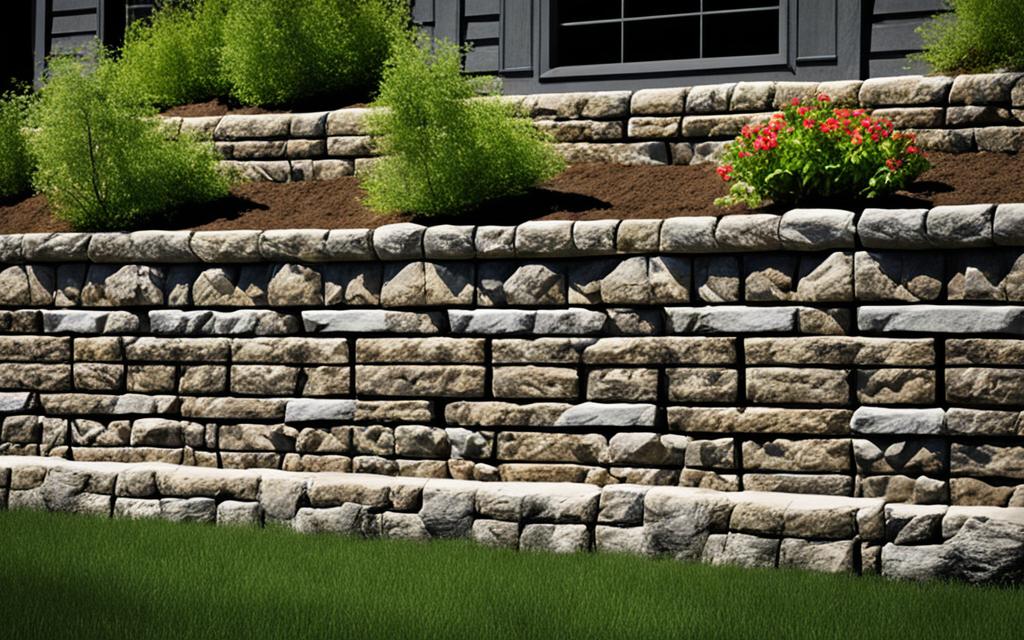
Installation Tips for Retaining Wall Blocks
Want to build a retaining wall yourself? Here are some tips. First, pick a spot for your wall and mark it. Think about drainage and the wall’s look. Then, prepare the ground by digging a trench and making it flat.
Use paver base and gravel for a strong base. To start, lay the first row of blocks carefully to keep them level. Then, add more blocks, changing how they join for strength. Don’t forget to put in drainage and fill the space behind the wall with soil.
Once your wall is up, get creative with its design. You could mix block colors, make a garden bed, or use the wall for a patio.
To keep your wall in good shape, clean and check it regularly. This ensures it lasts a long time.
Additional Tips for Retaining Wall Block Maintenance:
To keep your wall beautiful, here’s how to care for it:
- Check the wall often for cracks, damage, or movement.
- Wipe the blocks clean from time to time to keep them looking new. A mild cleaner and a soft brush work well.
- Make sure the drainage behind the wall works properly. This stops water from damaging your wall.
- Keep plants trimmed if they’re close to the wall. This will help avoid harm to the wall.
With the right approach to building and care, your retaining wall will be both lovely and long-lasting.
Conclusion
Retaining wall blocks are useful and look nice in many landscaping projects. They add stability and stop the ground from washing out. Plus, they let you make your outdoor areas usable and pretty. The cost of these blocks changes with their size, shape, and the material they’re made from.
Thinking about the long-term advantages of these blocks is key. They make your yard or garden look better and can be used more. By choosing well-made blocks, you ensure they will last a long time.
If you’re getting ready to build a wall, talking to an expert is a smart move. They can offer advice and show you many choices that fit what you want. Professionals will also help you pick the best materials for your project that match your style and budget. Keep in mind, spending on good retaining wall blocks betters your outdoor space for the future.
Call HT Paving for all of your retaining wall needs in San Mateo, CA, and surrounding areas.
FAQ
What is a Retaining Wall Block?
A retaining wall block is made from concrete, wood, rocks, or boulders. It stops soil from moving and can look different in size, color, and texture.
What are the benefits of retaining wall blocks?
They prevent soil from washing away and let you make stepped gardens. They also help mark out places in your garden and make it look nice.
How do I install retaining wall blocks?
Start by planning where your wall will go. Then, dig a trench and make sure it’s flat. Add a layer of paver base and gravel. Begin putting the blocks in place, ensuring they’re level. Stack more blocks on top, making sure to stagger them for strength. Put in a drainage system and fill the area behind the wall with soil. You can make your wall look better by using different colored blocks or planting on top.
What is the cost of retaining wall blocks?
The price of retaining wall blocks varies based on their size, shape, and materials. But remember, they add value and beauty to your space over time.

